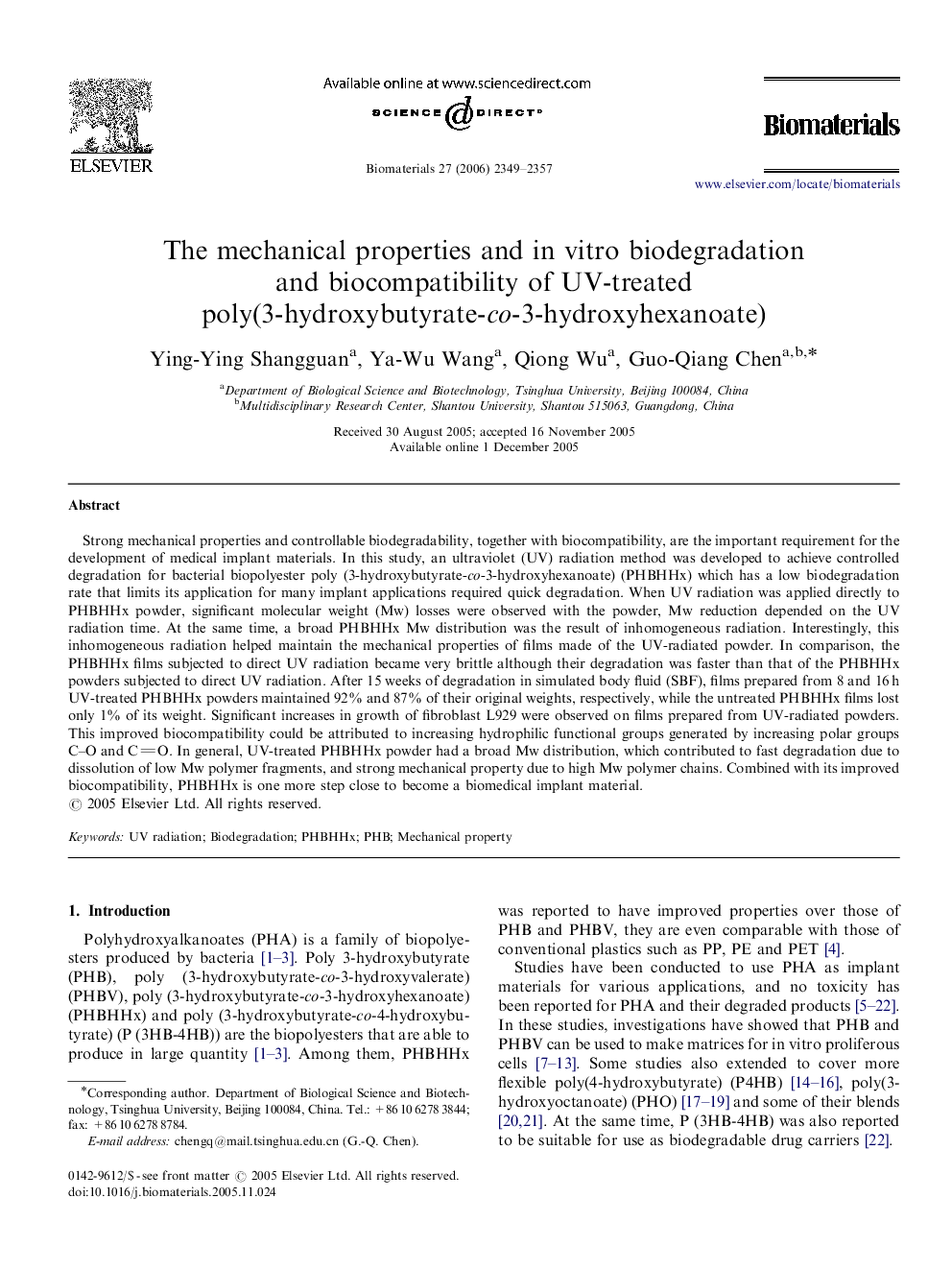| کد مقاله | کد نشریه | سال انتشار | مقاله انگلیسی | نسخه تمام متن |
|---|---|---|---|---|
| 11905 | 766 | 2006 | 9 صفحه PDF | دانلود رایگان |

Strong mechanical properties and controllable biodegradability, together with biocompatibility, are the important requirement for the development of medical implant materials. In this study, an ultraviolet (UV) radiation method was developed to achieve controlled degradation for bacterial biopolyester poly (3-hydroxybutyrate-co-3-hydroxyhexanoate) (PHBHHx) which has a low biodegradation rate that limits its application for many implant applications required quick degradation. When UV radiation was applied directly to PHBHHx powder, significant molecular weight (Mw) losses were observed with the powder, Mw reduction depended on the UV radiation time. At the same time, a broad PHBHHx Mw distribution was the result of inhomogeneous radiation. Interestingly, this inhomogeneous radiation helped maintain the mechanical properties of films made of the UV-radiated powder. In comparison, the PHBHHx films subjected to direct UV radiation became very brittle although their degradation was faster than that of the PHBHHx powders subjected to direct UV radiation. After 15 weeks of degradation in simulated body fluid (SBF), films prepared from 8 and 16 h UV-treated PHBHHx powders maintained 92% and 87% of their original weights, respectively, while the untreated PHBHHx films lost only 1% of its weight. Significant increases in growth of fibroblast L929 were observed on films prepared from UV-radiated powders. This improved biocompatibility could be attributed to increasing hydrophilic functional groups generated by increasing polar groups C–O and CO. In general, UV-treated PHBHHx powder had a broad Mw distribution, which contributed to fast degradation due to dissolution of low Mw polymer fragments, and strong mechanical property due to high Mw polymer chains. Combined with its improved biocompatibility, PHBHHx is one more step close to become a biomedical implant material.
Journal: Biomaterials - Volume 27, Issue 11, April 2006, Pages 2349–2357